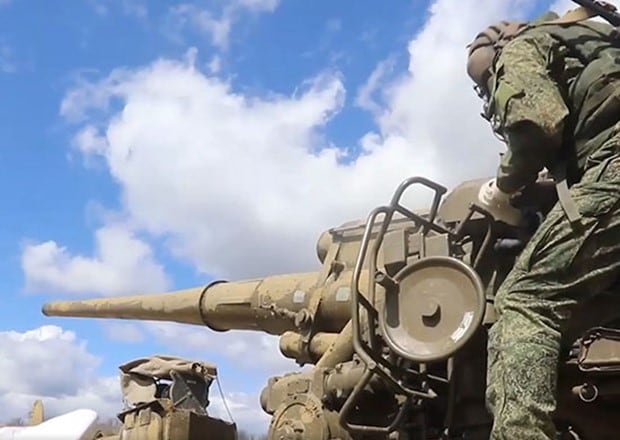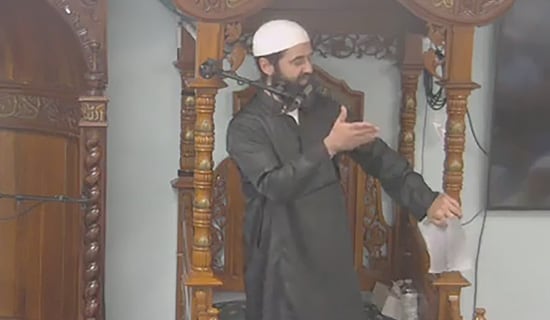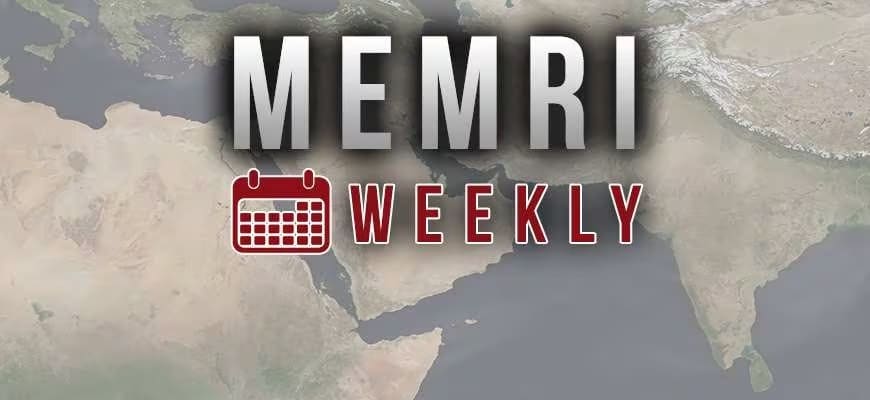At the end of August, Russian President Vladimir Putin announced a decision that might be seen as one of the boldest ones taken since the invasion of Ukraine half a year before. By a special decree, Putin ordered that the Russian Armed Forces should be joined by 137,000 additional combat and non-combat personnel.[1] Hence, the overall strength of the Russian army increased by 7.2 percent, and the active-duty forces increased (almost entirely in combat divisions) by 13.5 percent.[2]
This decision proves at least two well-known facts. First of all, Russian troops in Ukraine suffered huge losses and currently seem unable to advance further without significant reinforcements. Second, the Kremlin refrains from announcing a full-scale mobilization and introducing a war-time situation (or martial law). However, the most intriguing point is whether Putin's plan will take place, and – if it will – how it will happen.
Since 2017, the Russian military forces formally consisted of 1,900,000 servicewomen and servicemen, of whom only 1,150,000 can be counted as active-duty personnel.[3] If the overall population of a country is considered, the Russian army looks now only a quarter smaller than the Soviet one was. Out of these 1,150,000, around 400,000 signed a contract for a term of a year or longer and therefore may be considered members of a "professional army,"[4] and less than 300,000 are conscripts that should not be allowed to be utilized in the Kremlin's "special operation."[5] Hence, what Putin needs these days is to increase both the number of volunteers for continuing his war and the number of conscripts needed to run military facilities, in case the "professional army" is to be deployed in Ukraine and continuously suffer heavy casualties. Both tasks look challenging, to say the least.

(Source: Mil.ru)
The Authorities Are Trying To "Attract" New Volunteers
I would start with the situation with conscripts, which looks the worst. In 2008, the Russian leadership decided to cut the term of obligatory military service for young men from two years to just one.[6] It was thought that this might increase the number of people being ready to serve but I would not say that this was the case.[7] While in the autumn 2008 draft, 219,000 people were enrolled in the ranks of the military,[8] in the spring 2013 draft, that number fell to 153,000[9] and in spring 2020 it decreased further to 135,000.[10]
The last draft took place from April to July 2022 and resulted in the recruitment of not more than 100,000-105,000 people,[11] which represents a 25 percent drop compared to 2020. Nothing suggests that this autumn the authorities will be able to reverse this trend, since young people and their parents are well aware that there is a strong possibility that they will be killed in Ukraine, since in the early stages of the "special operation," several thousand conscripts were sent there even though President Putin had repeatedly announced that this would not happen[12] (and, to my knowledge, no one responsible for this has been brought to account). So, I would argue that the draft will decline by thousands of individuals in the whole of 2022 and stay at almost the same level in the years to come, thus encouraging the Kremlin to increase the share of "professionals" in the army ranks. This will not be easy either.
It took the Russian government almost 20 years to build up a 400,000-strong "professional" army, and around a fifth of it seems now to have been destroyed. In recent months, the authorities are doing their best to attract new volunteers. First of all, they pushed up the recruitment campaign, promising the newcomers reimbursements that look sky-high by Russian standards (at the same time the legislation was amended to allow 18-year-old dropouts to sign a contract, while before such candidates had to complete at least two years in after-school education to be able to do so).[13] If someone joins the army now, he may get up to 300,000 rubles ($5,000) in advance, and he may expect to be paid 150,000 to 200,000 rubles (up to $2,000 to 3,000) monthly (these figures are much higher than the official ones adopted in 2020).[14] In a country where the average wage stays at less than 60,000 rubles and, in many peripheral provinces, is as low as 35,000 to 40,000 rubles per month,[15] such a proposal is attractive. Sadly, the reactions of many soldiers' relatives are softened with the payments in case of death, which range from 7,500,000 to 12,500,000 rubles ($120,000 to 180,000).[16]
Hence, I would say, the authorities may be quite successful in their current efforts, but as new servicemen sign the standard contract for just six months, there is no guarantee that they will not quit thereafter. The next visible way to strengthen the ranks of the army is the creation of so-called "regional battalions," assembled in provinces by the local governors (as of today there is some information about not less than 25 of them).[17] The people who opt out to serve are paid on the beforementioned conditions (or something similar) but agree to serve only in these regional units, which might increase their sense of security and solidarity. Nevertheless, as it seems in the recent months, these efforts yield fewer results, since none of these battalions have been completely formed, much less deployed, on the front line so far. Potential volunteers are also sought in industrial enterprises, including those representing the Russian defense sector. The third lever of mobilization is even more innovative. In Russia, these days, up to 700,000 adult males are employed by "private guard agencies" that provide their services to commercial enterprises,[18] private individuals, and municipal authorities. All these entities are poorly regulated, and in many cases composed of people possessing a criminal background. Nevertheless they have a state license, and in many cases, it happens that the commanders of the local police or of the National Guard units blackmail the owners of such enterprises, threatening to revoke their licenses unless they enroll a certain number of "volunteers" from the ranks of their employees. In general, these measures can provide Putin with 40,000 to 50,000 additional servicemen, but no one knows for sure for how long their military service will last.
Drafting The Prison Population Into The Army
The most controversial issue here – that of drafting the prison population into the army (in Russia close to 520,000 are currently behind bars, with 77 percent of them being males aged between 18 and 55)[19] – should be addressed separately since this "business" has not been operated by the military but rather is managed by "private armed companies" like the most celebrated of them, called Wagner and headed by Yevgeny Prigozhin, a prominent war criminal and President Putin's close friend.[20] It was reported recently that Prigozhin personally visited several correctional facilities and recruited many people (the most common proposal includes cash bonuses, immediate release from jail or prison, dropping of criminal cases brought against these people and "cleaning" their personal dossiers by taking out all the data about either criminal case or conviction).[21] It seems there is some enthusiasm among the inmates for these schemes, and up to 20,000 may leave their current company of fellow criminals to join another one.
Here we come to another way of solving the task set up by Putin. The Russian forces in Ukraine consist not only of the regular army, the National Guard personnel, and the Chechen regiments (that mostly act on their own initiative), but also of the already-mentioned "private armed companies," and, last but not least, the local "armies" and "militias" of the self-proclaimed Luhansk and Donetsk People's Republics. The latter consist of at least 60,000 to 70,000 people, and the "governments" of these entities are working hard on increasing their numbers.
According to local witnesses, the authorities in Luhansk and Donetsk almost chase the young men who are fleeing to Russia in growing numbers. In recent months, the same started to happen to the men from the occupied Ukrainian territories, who are forced to join the Russian military after being said that their families are taken hostage for the time of their service.[22] Such forced mobilizations, outlawed by all the international laws governing both war and occupation, became extremely common in recent months and weeks in southwestern Ukraine. So, I would argue that the Russian commanders possess a viable option in case Putin's decree seems hard to fulfill: As the Kremlin is preparing to organize the referendums on joining Russia in Luhansk, the Donetsk People's Republics, and Ukraine's occupied territories, the simplest solution seems to be to add the local military regiments (as well as the personnel of the "private armed companies," previously incorporated them into either the LNR or DNR's armies, to the Russian military). This maneuver may add to the number of the Russian servicemen not less than 80,000 people in the short term, which may greatly facilitate meeting the Russian president's goals.
Therefore, caution is advised to those who would mock Putin's order. Although several observers insist that it looks like a pipe dream in a time when most Russians fear the prospect of being sent to the war zone (paradoxically enough, even the fiercest supporters of the "special military operation" have little enthusiasm for "de-nazifying" Ukraine through their personal efforts), the real situation may seem different. Even if the draft does not increase in 2022 and 2023, the goal of adding 200,000 conscripts (to compensate for 60,000 to 70,000 in losses and to get 137,000 additional soldiers) into the ranks of the army looks achievable. Up to 40,000 may be attracted by the recruiting campaign, around 20,000 to 30,000 mobilized by their employees (with some joining non-combat forces), close to 20,000 taken from jails and prisons, and up to 100,000 people brought in simply by means of the "legalization" of the personnel of "private armed companies" and by formally attaching the paramilitary groups now commanded by the chiefs of the "People's republics," to the Russian army. But here another major issue arises.
Conclusion
SUPPORT OUR WORK

The current Russian regime is based on lies and disinformation. In the military and economic domains, in propaganda and social policies, these are its true cornerstones. While Putin's orders are often met when his subjects report their successes to him, this does not reflect real change. For example, the automated transmission for Russian-built passenger cars was reported to be ready for mass production in 2008[23] but now the management of Russian automobile manufacturer AvtoVAZ is looking to buy these devices from the Chinese producers.[24] The same may well become the case with the announced mobilization – because I would say that lies and disinformation serve an even more important purpose in this sphere than they do in the other domains.
What Putin needs these days is to conduct a mobilization without really mobilizing his compatriots. The current Russian version of fascism is not based on mighty popular movements; on the contrary, it fears them.
The Kremlin wants to get more people enlisted in the army, but it has no intention of creating a sense of emergency in Russian society. Therefore, I would say, the current case looks like the best possible option for the bureaucrats to present their achievements and to report that the mission is accomplished, even if the result exists only on paper.
I would argue that Russia these days cannot increase its army in a way that might produce a significant change in combat capability – the new soldiers are demotivated; they are already impressed by the standstill on the front that reflects Russia's inability to advance; they are coming to the war theater almost exclusively for money. The formal goal will be reached, but what will happen next are the Russian army's new local defeats and retreats.
Moreover, it seems now obvious that Russia cannot supply its military with the necessary ammunition, and with the Western sanctions against the defense industries and the Western armaments being supplied to the Ukrainian army, the situation will inevitably change in Ukraine's favor. Russian President Putin acts in the only way he can: On economic issues, he promises more money, believing that the problem is solved once they are wired; in the military field, he still thinks that more soldiers can do what fewer cannot, completely ignoring the logic of contemporary wars. Therefore, I would conclude by stating that the "imaginary mobilization" will be completed, while producing only imaginary results at the frontline.
*Dr. Vladislav Inozemtsev is MEMRI Russian Media Studies Project Special Advisor.
[1] Radiosputnik.ria.ru/20220825/ukaz-1812096818.html, August 25, 2022.
[2] Pravda.com.ua/rus/news/2022/08/25/7364758/, August 25, 2022.
[3] Radiosputnik.ria.ru/20220825/ukaz-1812096818.html, August 25, 2022.
[4] Rg.ru/2020/03/25/shojgu-chislo-kontraktnikov-prevysilo-400-tysiach-chelovek.html, March 25, 2020.
[5] Vedomosti.ru/politics/news/2022/03/22/914639-genshtab-zapretil-prizivnikov, March 22, 2022.
[6] Tass.ru/info/684378, September 19, 2014.
[7] Gazeta.ru/social/2008/03/31/2682201.shtml, March 31, 2008.
[8] Ria.ru/20090715/177406890.html, July 15, 2009.
[9] Rg.ru/2013/07/12/prizyv-anons.html, July 12, 2013.
[10] Rg.ru/2020/07/16/v-minoborony-podveli-itogi-vesennego-prizyva-2020.html, July 16, 2020.
[11] Reforum.io/blog/2022/08/24/konechnaya-armiya-pochemu-rossijskie-nazemnye-sily-vryad-li-vernutsya-s-vojny/, August 24, 2022.
[12] Tass.ru/politika/13978461, March 5, 2022.
[13] Delfi.lt/ru/abroad/russia/v-rossijskuyu-armiyu-budut-brat-kontraktnikov-srazu-posle-shkoly.d?id=90585089, June 26, 2022.
[14] Zona.media/article/2022/07/27/kakievyplaty, July 27, 2022; Sib.fm/news/2022/06/09/nabor-na-sluzhbu-po-kontraktu-v-2022-skolko-platyat-kakie-lgoty-i-sotsgarantii-dayut, June 9, 2022.
[15] Gogov.ru/articles/average-salary
[16] Fintolk.pro/kakie-vyplaty-polozheny-rodstvennikam-pogibshego-na-ukraine-voennosluzhashhego/, July 29, 2022.
[17] Fedpress.ru/article/3069237, August 5, 2022; Zona.media/article/2022/08/10/imeni-lenina, August 10, 2022.
[18] Newsnn.ru/news/society/13-11-2017/na-rynke-ohrany-est-vozmozhnost-rosta-esche-na-30-40-katyrin, November 13, 2017.
[19] Vedomosti.ru/society/articles/2022/04/07/917014-rossiiskih-tyurmah, April 7, 2022; Infotables.ru/statistika/31-rossijskaya-federatsiya/943-kolichestvo-zaklyuchennykh-v-rossii.
[20] Rbc.ru/politics/09/07/2022/62c30b1c9a79470e8e115e48, July 9, 2022.
[21] Theins.ru/news/253889, August 6, 2022; Theins.ru/news/252842, July 4, 2022.
[22] Ru.espreso.tv/na-okkupirovannykh-territoriyakh-rf-usilila-mobilizatsiyu-otkaz-grozit-pytkami-denisova, June 18, 2022.
[23] Istories.media/investigations/2022/04/29/kak-lada-ostalas-bez-korobki-avtomata/, April 29, 2022.
[24] Gazeta.ru/auto/news/2022/08/22/18379706.shtml, August 22, 2022.




